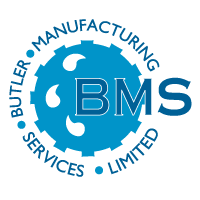Sewage Parameters 5 Part 2: Ammonia (NH4)
Hi,
continuing on from the last entry in our education blog, we will now go through a simple example of how to calculate the extra package effluent treatment plant capacity required in term of Population Equivalents (PE) to achieve the correct level of Ammonia removal (NH4) from wastewater effluent. More on the theory can be found in our last blog entry on the theory of Ammonia removal. The process is also know as Nitrification, meaning the conversion of Ammonia to Nitrate (NO3)Example:Flow: 60,000 l Per day.BOD: 18 Kg Per Day.PE in terms of BOD: 300 PEAverage Ammonia level in influent: 40 mg/l.Required Ammonia level in effluent: 15 mg/l.Therefore a reduction of 25 mg/l of Ammonia is required to produce an effluent containing 15 mg/l or less of Ammonia. The total Ammonia load that needs to be nitrified is therefore:The reduction in Ammonia x Total Flow:25 mg/l x 60,000 l = 1,500,000 mg or 1500 g.As was alluded to in the previous post;Ammonia normally requires 3 to 4 times the aerobic capacity required for BOD removal; Nitrification is also notoriously temperature sensitive. For this reason the ratio of 4 times BOD capacity for cold and temperate climates and 3 times BOD capacity for warm and hot climates is used. In cold winter climates, a combination of insulation and heating may be required to ensure the temperature of the liquor (sewage being treated) never falls below 8ºC. Therefore, the total Ammonia load in grams will be multiplied by 4;1500 g x 4 = 6000 g.Finally to convert the Ammonia load to a Population Equivalent (PE) the Ammonia load will be divided by the equivalent BOD load produced by 1 normal person per day, in other words 1 PE, which is 60 g;6000 g / 60 g = 100 PE.The additional Nitrification Capacity required to achieve Ammonia of 15 mg/l in the final effluent is 100 PE, bringing the total required capacity of the treatment plant to 400 PE. This can be accomplished in a package sewage treatment plant such as the Blivet in one or two stages or with the addition of additional treatment capacity in the form of the Aerotor.Next up for discussion is the rather tricky process of Denitrification (The Conversion of Nitrate (NO3) to Nitrogen and Oxygen Gas) which is the only way to reduce Total Nitrogen.If you have any specific queries or there is any topics you would like explored, please do not hesitate to contact me, Tommy.
A bit about the company:
Butler Manufacturing Services is a family owned specialist manufacturer of package (all in one) products for sewage treatment and surface water treatment established in 1986 with exports to 38+ countries worldwide including the world leading Blivet package sewage treatment plant, a ‘one stop shop’ for all surface water products from design to installation including attenuation, interceptors, holding tanks (incl. chemical resistant), hydrobrakes, rainwater harvesting tanks/filters & vortex silt separators, chlorine contact tanks, fully fitted pump stations and pumps, our 'all in one' vehicle wash water recycling system with zero discharge and much more.If there is a requirement for any of above on any project that you are working on we would welcome the opportunity to work on a solution with you.© Butler Manufacturing Services 2013.

